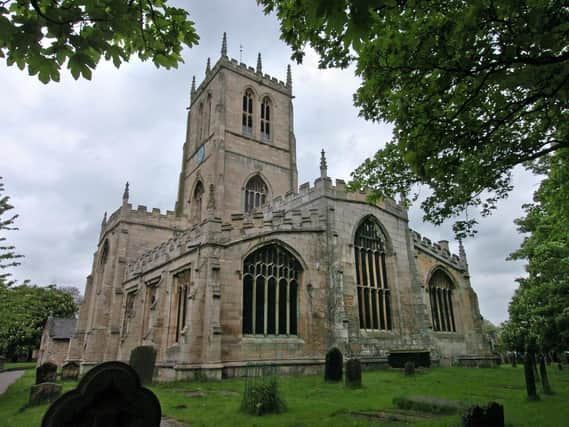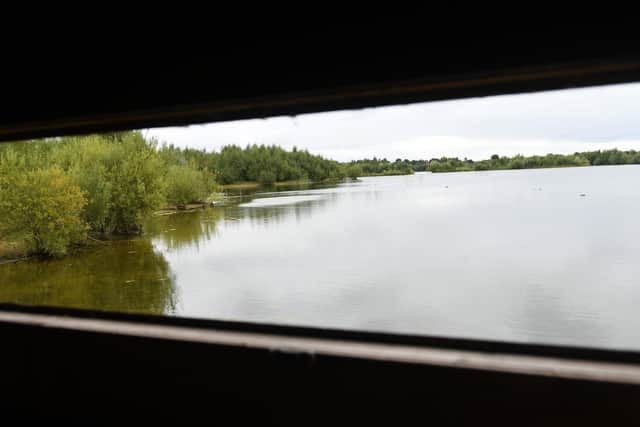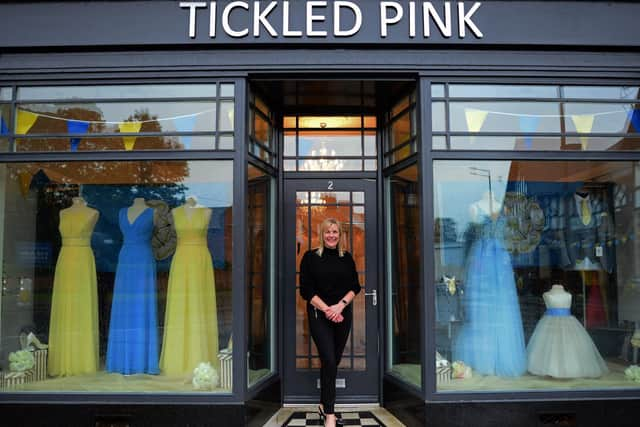From historic battles to being home to a wildlife nature reserve - Hatfield has quite a story to tell


In AD 632, Edwin, the first Christian king of Northumbria, was killed and defeated at the Battle of Hatfield Chase by armies led by the pagan kings Caedwalla of Gwynedd and Penda of Mercia. Fast forward to medieval times and Hatfield was at the very heart of a 70,000-acre forest and royal hunting ground known as Hatfield Chase.
The village’s Grade I-listed Manor House was the original site of King Edwin of Northumbria’s palace, although few traces of the 12th century hunting lodge survive today.
Advertisement
Hide AdAdvertisement
Hide AdDuring this era, life in Hatfield would have revolved around the palace, both socially and economically, and many important figures from history spent time there. William of Hatfield, the second son of Edward III, was born at Hatfield in 1337, but died in early childhood. Edward’s Queen, Phillippa, stayed there when he was away with his army fighting the Scottish. Geoffrey Chaucer, author of The Canterbury Tales, is said to have lived at Hatfield for a time, when he was in the service of Prince Lionel, the third son of Edward III.


Today there is surprisingly little evidence of Hatfield’s illustrious past, although there are a few clues in the architecture and layout of the town centre, particularly around the junction of Manor Road and High Street, and in some of its street names.
Hatfield High Street Conservation Area is said to be a classic example of a medieval street village, featuring a high street from which there are a series of long, thin plots that would have been connected at the rear by back lanes.
The High Street’s shops would originally have been timber-framed buildings but were renovated and encased in brick during the 18th century.
Advertisement
Hide AdAdvertisement
Hide AdAs the much larger town of Doncaster is just seven miles away, modern day Hatfield has only a handful of shops and pubs serving a predominantly local crowd. One of the few exceptions is Tickled Pink, a boutique that attracts brides-to-be from across Yorkshire and beyond.


Beyond the town’s historic core is a series of sprawling, modern housing estates, and the boundaries between the neighbouring settlements of Dunscroft, Dunsville, Hatfield Woodhouse and West End, which all form part of Hatfield parish, have become increasingly blurred as a result of recent development.
Parts of the Parish Church of St Lawrence date back to the 12th century, including the west and south doorways and part of the outer walls of the nave. The marks of several stonemasons suggest that other areas were built, or rebuilt, between 1480 and 1500 using magnesian limestone, including the 100ft tall tower. Other parts of the building were added at the beginning of the 16th century.
South Yorkshire, of course, has strong mining links and Hatfield Colliery produced coal for almost a century until the pit closed six years ago. Although history lovers may struggle to spot evidence of Hatfield’s rich heritage and the town itself is, arguably, off the beaten track for tourists, there’s a surprisingly good choice of visitor attractions in the surrounding rural area.
Advertisement
Hide AdAdvertisement
Hide AdBoston Farm Park at Hatfield Woodhouse was a firm favourite for family days out when my daughter was younger.
It’s smaller and perhaps a little more rustic than some similar attractions in Yorkshire, but young children will jump at the chance to feed the animals, which include all the farmyard favourites. There’s also a maize maze, which is typically open between July and October, as well as a play area and a cafe serving snacks and drinks. Our trips to Boston Farm Park are usually rounded off with a stop off at the Yorkshire Ice Cream Farm at nearby Sunny Bank Gardens.
At Hatfield Marina, a former sand quarry on the edge of the town, there’s an Outdoor Activity Centre featuring a campsite, cafe and the opportunity to have a go at a variety of water sports, including canoeing, kayaking and paddle-boarding.
There’s also an AquaPark, which is essentially a giant, inflatable, floating assault course featuring climbing walls, slides, runways and more besides. Children – and, let’s face it, probably quite a few parents too – will relish the opportunity to pop on a wetsuit and tackle it. You can even enjoy a spot of wild swimming in the four-lane, 20-metre natural pool set within the lake but it is, of course, unheated, so unless we’re lucky enough to get an Indian summer it’s probably not an activity for the faint-hearted.
Advertisement
Hide AdAdvertisement
Hide AdOne of my favourite things to do in the area is pop on my walking boots, pack a rucksack with drinks and snacks, and head out to explore the vast expanse of wildlife-rich wilderness that is Hatfield Moor. It forms part of the Humberhead Peatlands National Nature Reserve, which also includes Thorne, Goole and Crowle Moors and extends to 2,878 hectares – the equivalent of 3,000 football pitches.
Following centuries of peat extraction, the future of this fragile habitat was finally secured when the reserve was created in 1995, although peat extraction continued until as recently as 2004. Small companies had been extracting peat by hand since the 1880s, transporting it by narrow-gauge railway to the processing works, and Fisons then began extracting it mechanically in 1963.
Visitors to the area can learn more about the industry by visiting the Crowle Peatland Railway, a National Lottery-funded project set up to preserve the history of peat extraction on the moors. Three of the original Schoma locomotives that transported peat from the moor have been acquired and a 500-metre track created for them to run on.
The moors are remnants of wetland that occupied the floodplain of the Humberhead Levels thousands of years ago. Described by Natural England as “boggy, lowland mire”, they’re one of the rarest and most threatened habitats in the entire country and support more than 5,000 species of plants and animals, including 4,000 different types of insects.
Advertisement
Hide AdAdvertisement
Hide AdThey’re a breeding ground for the incredibly rare nightjar, a mysterious, nocturnal bird that was once referred to locally as the “gabble ratchet” due to its unusual “churring” call. A master of camouflage, it’s almost invisible to spot when it’s roosting or nesting on the ground in the dry bracken.
Forty years ago Hatfield Moor found itself in the news when a well suffered a blow-out during a gas drilling operation and caught fire. It took 17 days before a team of American oil and gas well fire-fighting specialists, led by “Boots” Hansen, could be brought in to bring the blaze under control.
Today, the moor has a series of clearly marked footpaths and viewing platforms. It’s open to the public daily, all year round, but guided walks and other events also take place.